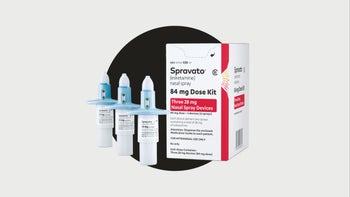
Why Are Most Mental Health Therapy Sessions Only 50 Minutes Long?
Key takeaways:
Most therapists offer 50-minute sessions. It allows enough time for the therapist and client to work toward the treatment goals while giving the client time to emotionally recover if the session is difficult.
Fifty-minute sessions also give therapists the chance to take a break between clients. And it’s often the amount of time insurance companies will pay for.
Therapists who practice therapies like cognitive processing therapy, exposure therapy, and family therapy may hold longer sessions.
Table of contents

On average, therapy sessions are typically around 45 to 50 minutes long. In some cases, sessions may be a bit shorter or longer depending on the type of treatment, the therapist’s approach, and the client’s ability to focus. It can also depend on what your insurance will pay for if you use your benefits to pay for therapy.
But many therapists work within a “50-minute hour” as their standard practice. They typically block out an hour of time for each client and use the last 10 minutes to write notes and take a short break before their next client arrives. However, there are other reasons therapy sessions often last 50 minutes.
Reasoning for 50-minute sessions in therapy
There are several reasons why many therapists hold 45- to 50-minute sessions.
Search and compare options
It helps the therapist and client stay focused
Having a consistent, 50-minute session helps the therapist and client keep the session focused on the client’s goals. A client knows in advance when the session will end, so they are less likely to run late. The therapist and client are also both aware that they have a limited amount of time to get to the “meat” of the session. So they’re less likely to get distracted or engage in small talk.
It provides structure to the session
A 50-minute session provides enough time for the therapist and client to check in, work on treatment goals, and wind down. Some therapists also do a final check-in at the end about how the session went and assign homework.
Fifty minutes also allows time for the client to recover if the session was emotionally intense. When sessions are more intense, the therapist may leave more time for winding down. For example, they may spend the last 5 minutes doing a mindfulness exercise.
It gives the therapist time to reset
Therapists generally schedule sessions on the hour and stick closely to their schedule. They do their best to not go over the session time and leave clients waiting.
Fifty-minute sessions give the therapist 10 minutes to write notes, use the restroom, and take a break in between clients. This can also help them feel refreshed before going into their next session.
Insurance companies encourage it
Medicare, Medicaid, and commercial insurance companies use a set of billing codes based on the length of the session. Most insurance companies encourage therapists to hold no more than 50-minute sessions. Some insurance companies even prefer shorter sessions.
Read more like this
Explore these related articles, suggested for readers like you.
Insurance rarely pays for extended session time. So a therapist will be paid the same for a 53-minute session as a session that’s longer than 60 minutes.
Sticking to a 45- to 50-minute session is therefore often simpler for billing purposes.
Are all therapy sessions 50 minutes?
Not all sessions are 50 minutes long. Therapy sessions can be shorter or longer depending on the:
Type of therapy
Therapist’s approach
Client’s specific needs
If you are using insurance to pay for therapy, this may also impact the length of your sessions. In some cases, an insurance company may require your therapist to bill for sessions that fall between 38 and 52 minutes. If you need longer sessions, such as 90-minute sessions, your insurance company may not pay.
If you are paying out of pocket for therapy, then your therapist may be able to more easily see you for shorter or longer sessions. They may also be able to adjust the fee depending on the length of your session.
In some cases, you can request a shorter session if finances are a concern and it’s appropriate for your situation. Keep in mind, though, that not all therapists will offer shorter sessions because it may not be enough time to be effective. It can also make scheduling more complicated.
Is 50 minutes enough time for therapy?
Fifty minutes is the standard length of a therapy session. But it’s not always enough time for therapy. Some therapy approaches require longer sessions so there’s more time to address the client’s symptoms.
These therapies are typically 60 to 90 minutes long:
Eye movement desensitization and reprocessing (EMDR) therapy
One of the downsides of longer therapy sessions is that some clients may have a hard time staying focused for more than 50 minutes. For example, children and adults with attention-deficit hyperactivity disorder (ADHD) may have difficulty maintaining attention for 50 minutes or more. Some therapists will recommend shorter sessions for these clients so they can get the most out of their time.
Why do some therapists recommend meeting twice a week?
Most therapists offer weekly therapy sessions. But sometimes, a therapist may suggest that a client meet more often. Some types of therapy are intended to be held more than once a week, including:
Your therapist may also recommend therapy twice a week or more if you have:
Severe depression
Severe anxiety
Obsessive-compulsive disorder
Post-traumatic stress disorder
Bipolar disorder
Eating disorders
Schizophrenia
Substance use disorders
The bottom line
Most therapists offer weekly 45- to 50-minute therapy sessions. The rationale behind the “50-minute hour” is that it provides the right amount of time to do the therapeutic work. At the same time, it leaves time for the therapist and client to wind down at the end. It also gives the therapist enough time to take a quick break and write notes in between clients. Lastly, many insurance companies encourage 45- to 50-minute sessions.
Even though weekly 50-minute sessions are the norm, some types of therapy require longer or shorter sessions.
Why trust our experts?



References
American Psychological Association. (2015). APA Practice Organization obtains clarification from Anthem on EquiClaim letters.
Malhotra, A., et al. (2022). Group therapy. StatPearls.
Pomerantz, A. S., et al. (2009). The challenge of integrated care for mental health: Leaving the 50 minute hour and other sacred things. Journal of Clinical Psychology in Medical Settings.
Schleider, J. L., et al. (2021). Retiring, rethinking, and reconstructing the norm of once-weekly psychotherapy. Administration and Policy in Mental Health.
Shedler, J., et al. (2010). The efficacy of psychodynamic psychotherapy. American Psychologist.
U.S. Department of Veterans Affairs. (n.d.). Cognitive processing therapy (CPT) for PTSD.
University of Pennsylvania. (2021). The efficacy of 90-minute versus 60-minute sessions of prolonged exposure for PTSD. ClinicalTrials.gov.
For additional resources or to connect with mental health services in your area, call SAMHSA’s National Helpline at 1-800-662-4357. For immediate assistance, call the National Suicide Prevention Lifeline at 988, or text HOME to 741-741 to reach the Crisis Text Line.



























